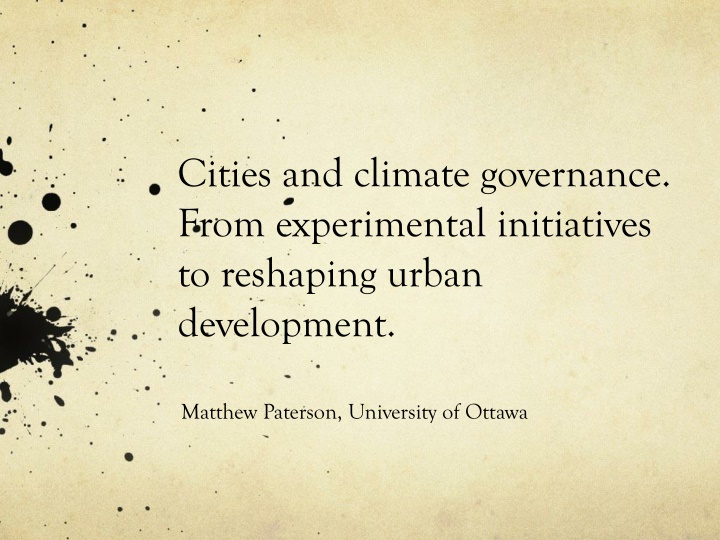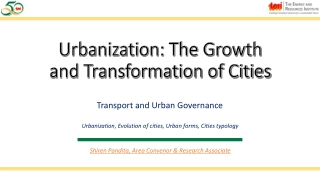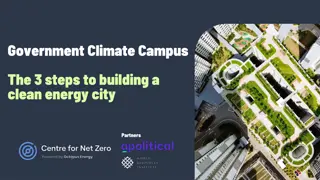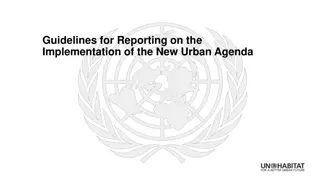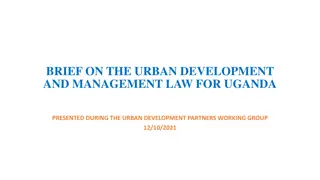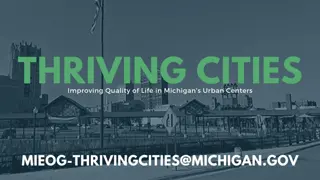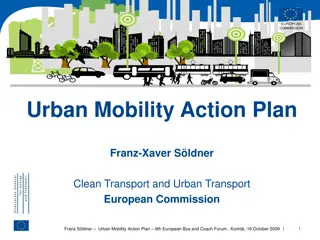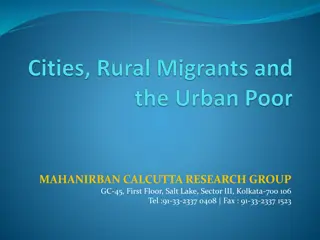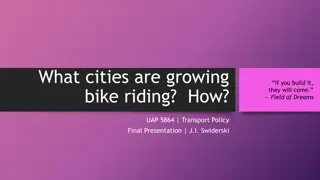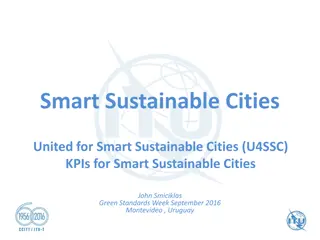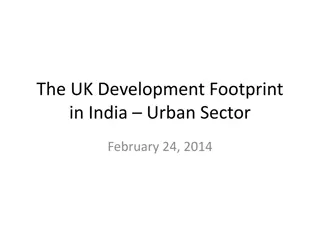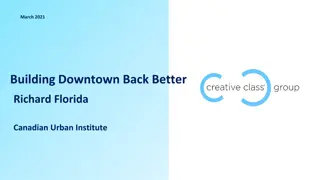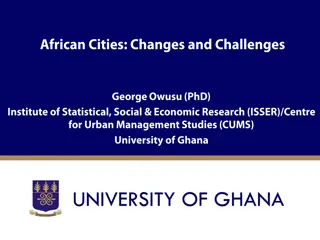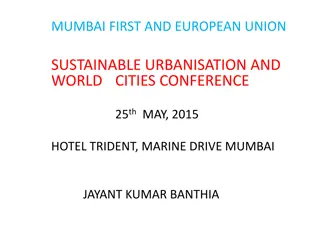Cities and Climate Governance: Reshaping Urban Development
Research explores experimental initiatives in cities and climate governance, focusing on urban political economy and development drivers contributing to emissions. The impact of density on urban energy use and greenhouse gas emissions is highlighted, emphasizing the importance of proportion of journeys not in a car, house size, and housing type. Low carbon city transformation in the North American urban context emphasizes increased density as a key element for low carbon transitions.
Download Presentation

Please find below an Image/Link to download the presentation.
The content on the website is provided AS IS for your information and personal use only. It may not be sold, licensed, or shared on other websites without obtaining consent from the author.If you encounter any issues during the download, it is possible that the publisher has removed the file from their server.
You are allowed to download the files provided on this website for personal or commercial use, subject to the condition that they are used lawfully. All files are the property of their respective owners.
The content on the website is provided AS IS for your information and personal use only. It may not be sold, licensed, or shared on other websites without obtaining consent from the author.
E N D
Presentation Transcript
Cities and climate governance. From experimental initiatives to reshaping urban development. Matthew Paterson, University of Ottawa
Research on cities/climate change Transnational city networks Experimental governance Aim: to focus more on question of urban political economy and development: drivers of emissions and enduring contradictions
The question of density Density is key to urban energy use and thus GHG emissions Density determines: Proportion of journeys made not in a car (key determinant of transport emissions) Note: much more important than the fuel economy of individual vehicles: a dense urbanite SUV owner who never drives has much lower emissions than a suburbanite Civic owner Density has big influence on: House size (key determinant of household energy use) Housing type (row houses for e.g. much lower energy use than single houses)
Source: Derived from P. Newman & J. Kenworthy, Sustainability and Cities, Island Press, 1999. This version available at: http://www.tumblr.com/tagged/kenworthy
The question of density Density is key to urban energy use and thus GHG emissions Density determines: Proportion of journeys made not in a car (key determinant of transport emissions) Note: much more important than the fuel economy of individual vehicles: a dense urbanite SUV owner who never drives has much lower emissions than a suburbanite Civic owner Density has big influence on: House size (key determinant of household energy use) Housing type (row houses for e.g. much lower energy use than single houses)
Low carbon city as transformation of urban development North American urban context Increased density as key device for low carbon transitions Already widely established as planning goal, even without climate/carbon as specific driver (increasingly in urban plans, but not yet a driver in many places) Highly contested process when new buildings proposed Useful site to explore character of conflicts values, desires, fears, etc invoked both for and against intensification
Intensification conflicts Research ongoing in Ottawa, preliminary results Conflicts concentrated in urban core Significant urban-suburban conflict Political economy of intensification is the same as the political economy of sprawl Competing visions of intensification Le Corbusier vs Jane Jacobs Ambivalence. Those who most consistently oppose intensification are those who most consistently are in favour of low carbon development
Percentage of projects per Ward Beacon Hill- Cyrville 5% Capital 10% Somerset 26% Kanata North 3% Kanata South 3% Rideau-Vanier 13% Kitchissippi 19% Rideau- Rockcliffe 6%
Intensification conflicts Research ongoing in Ottawa, preliminary results Conflicts concentrated in urban core Significant urban-suburban conflict Political economy of intensification is the same as the political economy of sprawl Competing visions of intensification Le Corbusier vs Jane Jacobs Ambivalence. Those who most consistently oppose intensification are those who most consistently are in favour of low carbon development
Conclusions Centrality of cities in climate policy Control over key policy levers Particular types of challenges Cultural Urban development models and political-economic relations Experiments important but attention to contradictions also important
